
Case Report
J Dent & Oral Disord. 2025; 11(1): 1188.
Indomethacin: As an Adjunct to Surgery in TMJ Ankylosis
Landge JS, Salve AD*, Shah KM, Fruitwala A, Gavali PR
Department of Oral and Maxillofacial Surgery, GDC&H, Chh. Sambhajinagar (Aurangabad), India
*Corresponding author: Salve AD, Department of Oral and Maxillofacial Surgery, Government Dental College and Hospital, Navkhanda, Chi. Sambhajinagar (Aurangabad), Maharashtra, India Tel: 8451086459; Email: aishsalve97@gmail.com
Received: January 06, 2025; Accepted: January 28, 2025; Published: January 31, 2025
Abstract
A high percentage of TMJ ankylosis is seen following trauma. TMJ ankylosis is the result of heterotopic bone formation. Recurrence rate of TMJ re-ankylosis even after surgical treatment is quite high. Orthopaedic surgeons have been using indomethacin in hip replacement surgeries to prevent heterotypic ossification. Limited number of studies have explained the use of indomethacin in the prevention of TMJ re-ankylosis in the literature. Two cases of TMJ ankylosis are discussed in this article. Indomethacin for prevention of post operative heterotopic bone formation was used as an adjunct to surgery. The presented cases showed attained stable mouth opening over a period of followup of about two years after surgical management and oral indomethacin.
Keywords: TMJ; Ankylosis; Indomethacin; Heterotropic ossification; Adjunct
Introduction
Indomethacin is an acetic acid derivative of NSAID. It is a nonselective COX inhibitor. Potent anti-inflammatory drug with prompt antipyretic action, a highly potent PG inhibitor and a potent inhibitor of local remodeling and re-pair of bone after trauma. Commonly used in ankylosing spondylitis, destructive arthropathies, psoriatic arthritis, acute gout & malignancy associated (refractory) fever. Prevention of TMJ re-ankylosis is a challenge. Recurrence rates have been reported from about 0% to 100%. Heterotopic ossification is seen in joints undergoing multiple op-erations and post trauma. Use of indomethacin prophylactically in TMJ ankylosis cases is not popular. Although it is used prophylactically in hip arthroplasties.
Methods
Indomethacin was given to two patients following TMJ ankylosis surgery. 75 mg indomethacin was given once a day, started within 24 hours of surgery, as heterotopic bone formation starts at around 16 hours and reaches peak at 48 hours [1].
Case 1 – Presentation
A 21-year-old male patient reported to the Department of Oral and Maxillofacial Surgery in 2021, with a complaint of limited mouth opening. The patient had sustained accidental fall from a height in January 2019. He was treated with loosed reduction and inter maxillary fixation for the bilateral un displaced condylar fractures. Subsequently in the coming period, he experienced gradual reduction in mouth opening. It was 7mm when he visited the hospital [2].
Investigation: A computed tomography scan showed bony ankylosis on right side and fibrous ankylosis on the left side. The mediolateral dimension of the bony ankylotic mass on the right side was 6mm.
Treatment: The patient was operated via preauricular modified Blair’s incision. Aggressive excision of the bony ankylotic mass was done. A gap arthroplasty of 1.5 cm was created. Intramural approach was taken to undergo right coronoidectomy. Abdominal fat graft was harvested and interposed between the two cut bone surfaces. Intraoperative passive and active mouth openings were 22 mm and 30 mm, respectively. The patient was started on oral indomethacin 75 mg once a day for two weeks. Patient was advised to do passive mouth opening exercises for three days [3-6]. Aggressive physiotherapy was started from the third post operative day for a total of seven days. After discharge from the hospital, he was advised to continue mouth opening exercises with the help of Heister’s jaw opener.
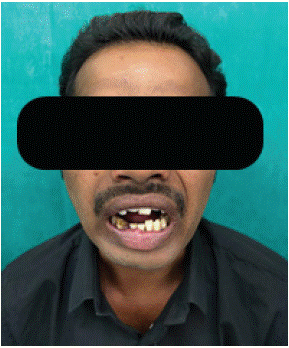
Figure 1: Case – 1- Preoperative mouth opening of less than 1cm.
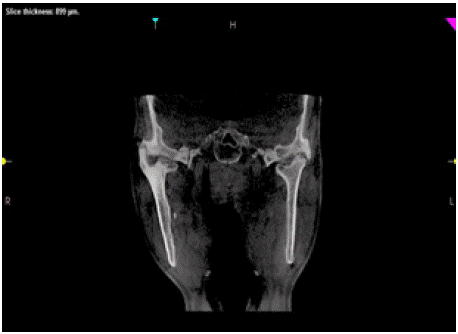
Figure 2: Case-1 - Preoperative coronal section of CBCT scan of bilateral
TMJ showing ankylosis
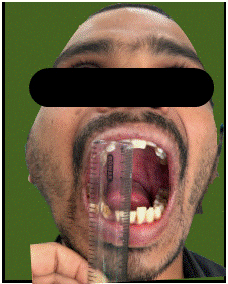
Figure 3: Case-1 - Two-year follow up showing passive mouth opening of
41mm.
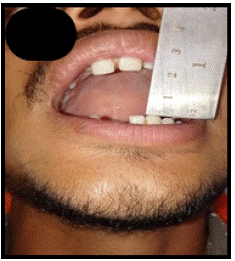
Figure 4: Case-2 - Preoperative coronal section of CBCT scan showing
fibrous ankylosis.
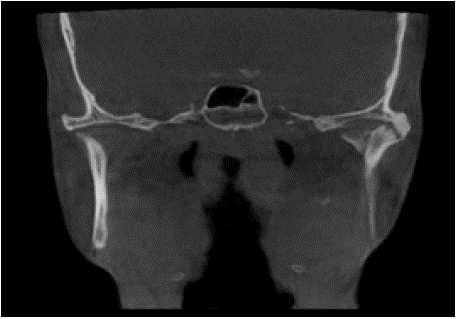
Figure 5: Case-2 - Preoperative mouth opening of about 2cm.
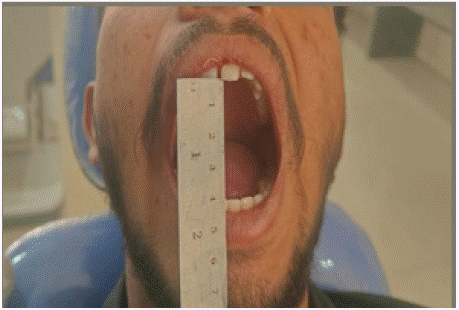
Figure 6: Case-2 - Two-year follow up showing passive mouth opening of
39mm
Outcome: There were no complications other than pain during the active exercise sessions. Two years postoperative-ly, his passive mouth opening was 41 mm [7-9].
Case 2 – Presentation
A 25–year–old male, presented to the the Department of Oral and Maxillofacial Surgery in 2017. History revealed that the patient had sustained a road traffic accident in February 2016. After about one year following the trauma he noticed gradual reduction in the mouth opening. His present mouth opening was 19 mm.
Investigation: CBCT scan examination showed fibrous ankylosis on the left side.
Treatment: The patient was operated via Alkayat–Bramley incision. Gap arthroplasty of 1.5 cm was created. Ab–dominal fat graft was harvested and interspersed between two bony surfaces. Passive and active intraoperative mouth opening of 27 mm and 33mm as noted, respectively [5].
The patient was started on oral indomethacin 75 mg once a day for two weeks. Aggressive physiotherapy was start–ed from the next post operative day for a total of seven days. After discharge from the hospital he was advised to continue mouth opening exercises with the help of Heister’s jaw opener.
Outcome: There were no complications in the post operative period. His passive mouth opening after six months follow–up was 35mm. Two years postoperatively, his passive mouth opening was 40 mm [10–12].
Discussion
This presentation shows that using Indomethacin as an adjunct in TMJ ankylosis improved the mouth opening, with no recurrence in the postoperative period of two years.
TMJ ankylosis is a challenge to treat. Surgical correction may show satisfactory result but incidence of recurrence is high. Interposition arthroplasty with the use of autogenous or alloplastic materials also has potential for recurrence. The option of total jaw replacement is not used as it is expensive, material failure and wear effects are seen, it does not contribute in growth process. Radiation is an option for prevention of ankylosis. About 10 Gy in 5 daily frac–tions, starting 1 – 3 days postoperatively. However, there are concerns over radiation for benign condition, as side effects of radiation are xerostomia, impairment of bone healing and chances of malignancy. Pharmacotherapy with celecoxib & etidronate, with weekly forced dilation (brisement) & home physical therapy with the TheraBite Jaw Motion Rehab System.
Initial results for the long–term use of Indomethacin have been favorable, the use of indomethacin prophylactically has ethical issues, as the side effects are quite common. It is not used in paediatric patients. Although the use of in–domethacin as an adjunct to surgery, in an otherwise healthy patient can help in reduction of possible multiple fu–ture surgeries, as it will prevent recurrence. Indomethacin has provided a solution for many of our patients however further research is warranted in the form of a randomised, double blind clinical trial.
Conclusion
Surgery remains the principal mode of treatment in the management of TMJ ankylosis, addition of oral indometha–cin may be beneficial as an adjuvant for prevention of TMJ re–ankylosis in adults.
Ethics Statement/Confirmation of Patient Permission
Yes
References
- Bhatt K, Pandey S, Bhutia O, Roychoudhury A. Use of indomethacin as an adjuvant to surgery for recurrent temporomandibular joint ankylosis in adults. Natl J Maxillofac Surg. 2014; 5: 198–201.
- Shorafa M, Shaikh O, Ayliffe P. First report of use of indomethacin in improving mouth opening and prevent re–ankylosis in TMJ ankylosis. Br J Oral Maxillofac Surg. 2011; 49: S101.
- Hegel A. Outcome of Surgical Protocol for Treatment of Temporomandibular Joint Ankylosis Based on the Pathogenesis of Ankylosis and Re–Ankylosis. A Prospective Clinical Study of 14 Patients. Journal of Oral and Maxillofacial Surgery. 2015; 73; 2300–2311.
- Popescu V, Vasiliu D. Treatment of temporo–mandibular ankylosis with particular reference to the interposition of full–thickness skin autotransplant. J Maxillofac Surg. 1977; 5: 3–14.
- Roychoudhury A, Parkash H, Trikha A. Functional restoration by gap arthroplasty in temporomandibular joint ankylosis: A report of 50 cases. Oral Surg Oral Med Oral Pathol Oral Radiol Endod. 1999; 87: 166–169.
- Sarma UC, Dave PK. Temporomandibular joint ankylosis: An Indian experience. Oral Surg Oral Med Oral Pathol. 1991; 72: 660–664.
- Dahl HK. In: Symposium on Arthrosis: Proceedings of a Conference, October 1974. Norway: MSD Blindern; 1975. Kliniske observasjoner; pp. 37–46.
- Schurch B, Capaul M, Vallotton MB, Rossier AB. Prostaglandin E2 measurements: Their value in the early diagnosis of heterotopic ossification in spinal cord injury patients. Arch Phys Med Rehabil. 1997; 78: 687–691.
- Burd TA, Lowry KJ, Anglen JO. Indomethacin compared with localized irradiation for the prevention of heterotopic ossification following surgical treatment of acetabular fractures. J Bone Joint Surg Am. 2001; 83A:1783– 1788.
- Yan YB, Duan DH, Zhang Y, Gan YH. The development of traumatic temporomandibular joint bony ankylosis: A course similar to the hypertrophic nonunion? Med Hypotheses. 2012; 78: 273–276.
- Jensen AW, Viozzi CF, Foote RL. Long term results of radiation prophylaxis for heterotopic ossification in the temporomandibular joint. J Oral Maxillofac Surg. 2010; 68: 1100–1105.
- Wick M, Muller EJ, Hahn MP, Muhr G. Surgical excision of heterotopic bone after hip surgery followed by oral indomethacin application: Is there a clinical benefit for the patient? Arch Orthop Trauma Surg. 1999; 119: 151–155.